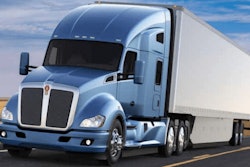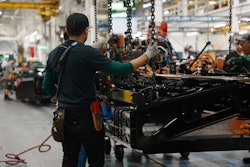
In the case of tractor aerodynamics, the most significant development has been a focus on drivewheel fairings, tractor-trailer gap devices and the replacement of mirrors with cameras. In general, tractor aerodynamic technologies and strategies are constantly and rapidly evolving as truck OEMs continue to do work to optimize their base models to reduce aerodynamic drag, NACFE says.
One recommendation from the report is that fleets very carefully remove aerodynamic options from the manufacturer-recommended sleeper aero configurations and do so only when there are clearly identified and justifiable reasons in a specific duty cycle.
Once the fleet has selected a base model there are additional options for optimizing the tractor’s aerodynamics, including cab and roof extenders, tractor-trailer gap devices, bumpers, chassis fairings, drive wheel fairings, fifth wheel location and height, wheel covers and vented mud flaps.
Optimizing a tractor for aerodynamics can help fleets exceed 10 MPG where their non-aerodynamic predecessors were lucky to get 6 MPG, NACFE says.
The report also found that there is still work that needs to be done on aerodynamic devices for day cabs and alternative fueled vehicles in order for fleets to reap fuel saving benefits.
The biggest development noted in the trailer aerodynamic report was the sunsetting of first generation trailer tail devices and the rise of a new generation of rear devices that address some of the concerns with first generation devices including driver acceptance and docking. Because the rear of the trailer presents a good opportunity for aerodynamic savings, several manufacturers entered the market with devices that are smaller and require no driver interaction to deploy.
The per-vehicle fuel economy benefit of trailer aerodynamic devices can be high, ranging from 1 percent to more than 10 percent, depending on the devices chosen with priority given to underbody devices followed by rear devices and then tractor-trailer gap devices.
NACFE says the revised study concluded that while trailer aero devices have matured, they will continue to improve and become lighter, more robust and less expensive thereby improving their payback.









